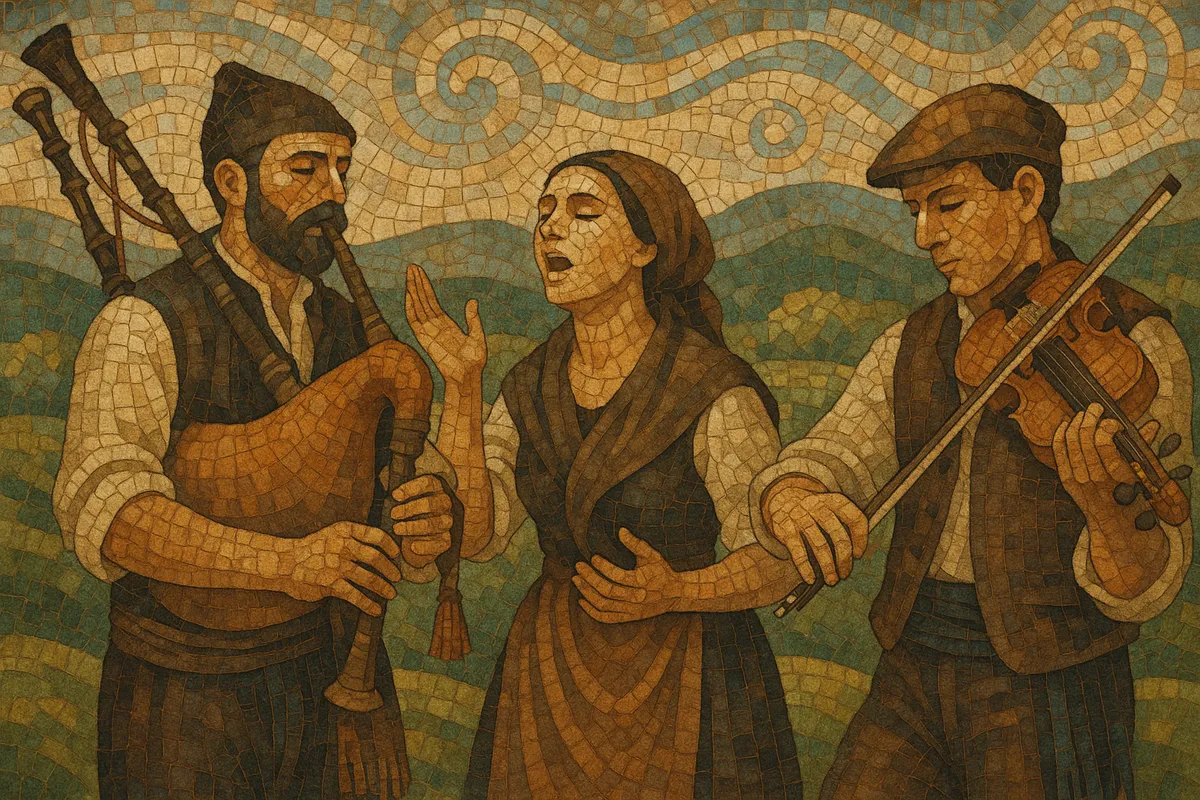Asturian folk music (Música tradicional asturiana) is the traditional music of Asturias, a mountainous region in northern Spain. It is centered on the gaita asturiana (Asturian bagpipe), voice-led song forms such as the tonada asturiana, and a lively repertory of circle and couple dances.
Stylistically, it sits at the crossroads of the Iberian and Atlantic "Celtic" sound worlds: modal melodies, drones, and ornamented piping meet Iberian strophic song, tambourines, and local dance rhythms like the danza prima, pericote, muñeira, and jota. Performances range from solo unaccompanied singing to pipe-and-drum duos, small dance bands with fiddle and diatonic accordion, and modern ensembles that expand the palette with guitar and contemporary arrangements.
Asturian vernacular music took recognizable shape in the 1800s, when rural dance and festive traditions crystallized around the gaita asturiana and local song practices. Circle dances like the danza prima and regionally distinct couple dances (pericote, muñeira, jota) were accompanied by bagpipe with drum, tambourines, and clappers, while tonada asturiana developed as a virtuosic, unaccompanied vocal style sung in Asturian (asturianu).
In the early 1900s, collectors and scholars—most notably Eduardo Martínez Torner—documented and systematized Asturian repertories, helping stabilize melodic variants and lyric corpora. Despite the disruptions of war, industrialization, and migration, song and dance survived in village festivities and miners’ communities.
After the Franco era, regional cultural renewal brought a strong folk revival. Dance troupes and bandines reappeared; ensembles like Llan de Cubel and Felpeyu professionalized the sound, updating arrangements while retaining traditional modes and rhythms. Festivals (e.g., Intercéltic d’Avilés) linked Asturias to the broader Atlantic "Celtic" circuit, while the duo Nuberu popularized an Asturian folk-rock and song movement.
The late 1990s and 2000s saw international exposure through artists such as Hevia, whose gaita-led tunes reached global charts. Today, Asturian folk thrives in parallel strands: historically informed performance (pipe-and-drum duos, dance bands, tonada singing), stage ensembles with diatonic accordion and fiddle, and crossover fusions with folk rock, Celtic rock, and selective electronic textures. Education programs, local folixa (festivals), and language revitalization continue to nourish the tradition.
Write danceable grooves for traditional forms:
•Muñeira: compound meters (6/8) with lift on beats 1 and 4.
•Jota: duple/triple interplay (3/4 or 6/8), with hemiola gestures.
•Danza prima: unison circle singing with steady pulse; emphasize communal phrasing.
•Pericote: vivacious binary rhythms with clear phrase endings for figures.








